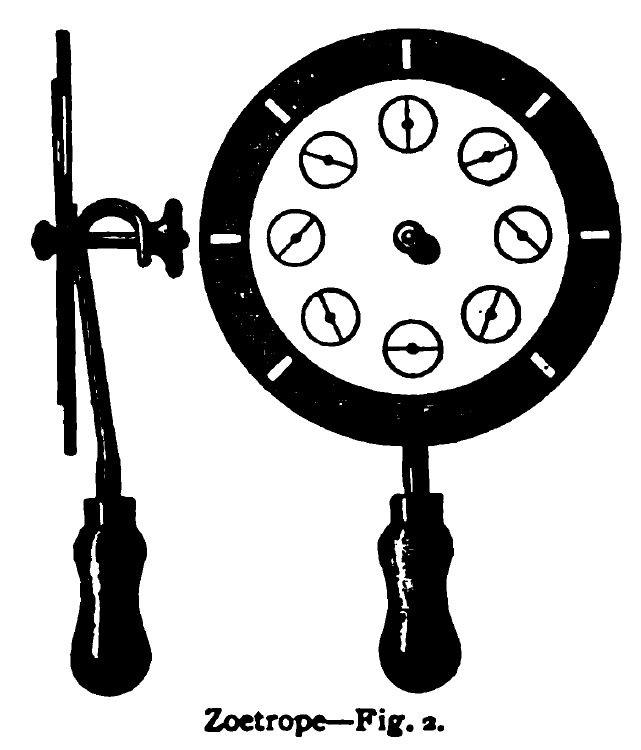 |
| Scientific American, 03-April-1869 |
from The Dictionary of Photography for Amateur and Professional Photographers By Edward John Wall, 1902.
Zoetrope. The application of photography to the Zoetrope —or wheel of life—is no new thing, as over twenty years ago Mr. Baden Pritchard made a series of photographs of a steam-engine, moving it forward a little between the taking of each picture; and when the series was viewed in the zoetrope, there was produced a most realistic appearance of the steam engine in motion. We must, however, go back much farther than this for the first idea of the lantern or projection zoetrope, something of the kind having been patented by Jundzill in 1856; but we believe the first exhibition of animated photographs on the screen in London was in 1882, when Muybridge exhibited the horse in motion at the Royal Institution. About the beginning of 1896 exhibitions of animated photographs on the screen became suddenly popular, and almost every maker of apparatus for this purpose gave a new and strange name to his particular form of the lantern or projection zoetrope. In the modern forms the series of negatives is taken on a long band of celluloid at the rate of about 900 per minute. A band of positives is printed from this by rolling the negative band and a band of coated celluloid together so that they shall run in contact in front of a source of light; and the exhibition is effected by means of a lantern, which automatically unrolls the positive band, and projects each photograph in succession upon the screen. For further information on this subject, see CINEMATOGRAPH.
No comments:
Post a Comment
Comment moderation is turned on. Your message will appear after it has been reviewed.